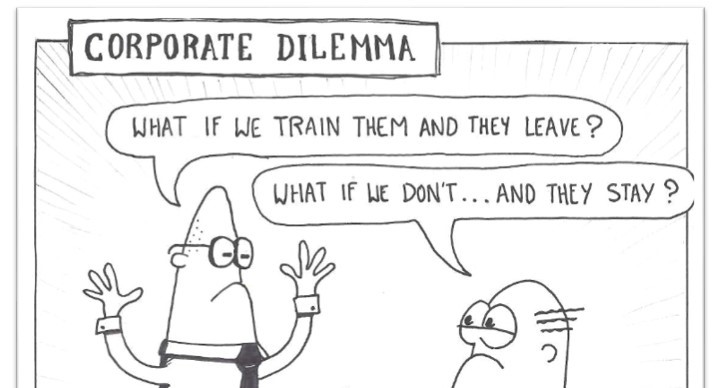At KONA, we know that Sales is an ever-evolving field. What worked yesterday might not work tomorrow. Yet, we tend to see too many sales teams relying on outdated techniques, limited coaching, or a “figure it out” mentality. If you want your team to perform at its best, continuous training isn’t optional.

The Hidden Cost of an Untrained Sales Team
Many businesses underestimate the impact of insufficient sales training. Here’s what happens when sales teams don’t receive ongoing development:
Missed Revenue Opportunities – Salespeople who don’t know how to handle objections, ask the right questions, or build relationships will struggle to close deals.
High Turnover Rates – Without proper guidance, salespeople can become frustrated and leave, costing your company time and money.
Inconsistent Performance – A lack of training leads to unpredictable results, making it harder to forecast and scale revenue.
Low Customer Trust – If your salespeople aren’t well-trained, customers will notice. They’ll turn to competitors who provide a better experience.
The Benefits of Regular Sales Training
Investing in ongoing sales training isn’t just about avoiding problems, it’s also about achieving new levels of success. Here’s what KONA’s Sales Training can do for your team:
✅ Boost Confidence & Performance – A well-trained salesperson knows their product, understands customer pain points, and can navigate objections smoothly.
✅ Increase Close Rates – Training sharpens prospecting, presentation, and negotiation skills, leading to more deals won.
✅ Improve Adaptability – Markets change. Training helps your team stay ahead of trends, competitors, and evolving customer needs.
✅ Strengthen Team Morale – When salespeople feel supported and equipped with the right skills, they’re more likely to stay engaged and motivated.

How to Build an Effective Sales Training Program
Not all sales training is effective. A one-time workshop won’t always cut it. Here’s how to create a training program that drives real results:
Make It Continuous – Sales Training should be an ongoing process, not a one-and-done event. Implement weekly coaching sessions, role-playing exercises, and refresher courses.
Tailor It to Individual Needs – Not every salesperson struggles with the same things. Use personalised assessments (like DISC) to customise training based on your team’s strengths and areas for improvement.
Use Real-World Scenarios – Theoretical knowledge is great, but nothing beats hands-on learning. Incorporate live sales calls, objection-handling exercises, and interactive workshops. KONA’s Power Hours are a great way to see results in real time. Learn more about KONA’s Power Hour Training by clicking here.
Encourage Peer Learning – Top sales performers can share their best practices with newer sales reps through things like mentorship programs.
Measure and Adjust – Track key performance metrics (e.g. close rates, average deal size, customer satisfaction) to see if training is making an impact. Adjust as needed.

Your sales team is only as strong as the training you provide. In a competitive market, well-trained salespeople are a necessity. Investing in ongoing professional development for your team ensures they are always improving, closing more deals, and driving business growth.
So, when was the last time your team had real sales training? If it’s been a while, now’s the time to make it a priority. To learn why KONA’s sales training processes are preferred over more traditional sales training methodologies (such as the Miller Heiman sales process) – read more here.
Contact KONA today to discuss how we can help you build a tailored Sales Training Program for your team.
Call 1300 611 288 or email info@kona.com.au
















 Selling is not just about the numbers. That kind of approach may have worked in the past, but now customers want to be engaged with, and not just told all of the technical details of your products and services.
Understanding a customer’s personality and communication preferences is now crucial.
Selling is not just about the numbers. That kind of approach may have worked in the past, but now customers want to be engaged with, and not just told all of the technical details of your products and services.
Understanding a customer’s personality and communication preferences is now crucial.



 If a marketing team provides leads, a sales team nurtures them to turn them into cold, hard cash. However, in order to increase revenue and profits, the members of both teams have to work like a well-oiled machine for that scenario to be a reality.
As a Leaders and Business Manager in your Organisation, you might be well aware of the ‘Bell Curve Theory’ where 20% of your sales team are top performers, 60% are average at their best and 20% miss their targets on a regular basis. With targeted and relevant holistic and streamlined team, you need to keep a few factors in mind:
If a marketing team provides leads, a sales team nurtures them to turn them into cold, hard cash. However, in order to increase revenue and profits, the members of both teams have to work like a well-oiled machine for that scenario to be a reality.
As a Leaders and Business Manager in your Organisation, you might be well aware of the ‘Bell Curve Theory’ where 20% of your sales team are top performers, 60% are average at their best and 20% miss their targets on a regular basis. With targeted and relevant holistic and streamlined team, you need to keep a few factors in mind:





































































